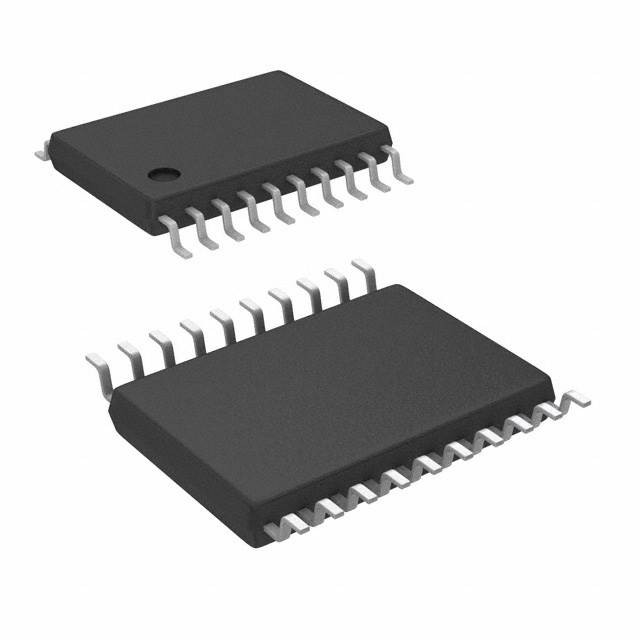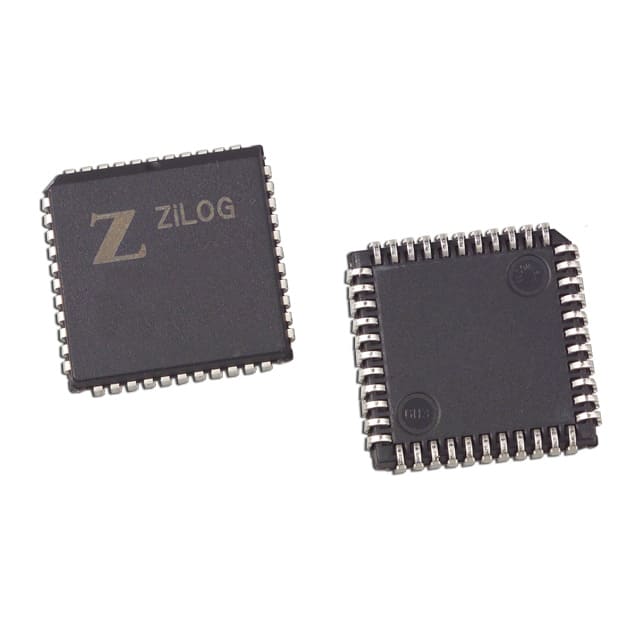Ⅰ. Embedded - Microcontrollers - Application Specific
Ⅱ. Physical Characteristics of Embedded - Microcontrollers - Application Specific
Ⅲ. Electrical Characteristics of Embedded - Microcontrollers - Application Specific
Interface - Modems - ICs and Modules
Interfaces, modems, ICs (Integrated Circuits), and modules are all components and technologies used in various communication systems and devices. Let's understand each of these terms in more detail:

1.Interfaces: In the context of communication systems, an interface refers to the point where two different devices or systems connect and interact. It defines the protocols, physical connections, and specifications necessary for data exchange between devices. Interfaces can be found in a wide range of applications, including computer networks, telecommunication systems, industrial automation, and more. Common types of interfaces include Ethernet, USB, HDMI, Serial, and wireless interfaces like Bluetooth and Wi-Fi.
2.Modems: A modem is a device that modulates and demodulates signals to enable the transmission of data over communication channels. The term "modem" is derived from the words "modulator" and "demodulator." Modems are primarily used to connect devices to the internet or other networks using various transmission media, such as telephone lines, cable lines, fiber optic cables, or wireless connections. They convert digital data from a device into analog signals for transmission and then reconvert the analog signals back into digital data at the receiving end.
3.Integrated Circuits (ICs): Integrated circuits, also known as microchips or chips, are miniaturized electronic circuits made of semiconductor materials. ICs contain multiple electronic components, such as transistors, resistors, capacitors, and diodes, etched onto a small silicon wafer. These components are interconnected to perform specific functions. ICs are widely used in electronic devices, including modems, as they allow for compact designs, improved performance, and reduced power consumption. ICs can be specialized for various purposes, such as microprocessors, memory chips, amplifiers, and more.
4.Modules: In the context of communication systems, modules refer to pre-packaged units or components that offer specific functionalities and can be easily integrated into a larger system or device. Modules often contain one or more integrated circuits along with additional components, such as connectors, antennas, and control circuitry, all enclosed in a compact form factor. Modules are designed to simplify the integration process and reduce development time and costs. Examples of communication modules include Wi-Fi modules, Bluetooth modules, cellular modules, and GPS modules.
In summary, interfaces define the standards and protocols for data exchange between devices, modems enable data transmission over communication channels, ICs are miniaturized electronic circuits that provide functionality, and modules are pre-packaged units containing integrated circuits and additional components for easy integration into larger systems. Together, these components play a crucial role in enabling efficient and reliable communication in various applications and devices.
Physical Characteristics of Interface - Modems - ICs and Modules
Physical characteristics of Interface, Modems, ICs, and Modules can vary based on their specific applications and designs. Here are some common physical characteristics associated with each of these components:
Interfaces:
1.Connector Type: Interfaces often utilize specific connector types that determine the physical connection between devices. Examples include Ethernet RJ-45 connectors, USB Type-A or Type-C connectors, HDMI connectors, or serial connectors like DB9 or DB25.
2.Form Factor: The physical form factor of an interface can vary depending on the application. For example, Ethernet interfaces can be found in the form of modular jacks or ports on networking equipment, while USB interfaces may appear as ports on computers, laptops, or other devices.
Modems:
1.Enclosure: Modems typically come in compact enclosures that house the necessary electronic components. The enclosure can be made of plastic, metal, or a combination of materials, providing protection and structural integrity.
2.Connection Interfaces: Modems may have various connection interfaces to link them with communication channels or networks. These interfaces can include telephone line jacks, Ethernet ports, coaxial cable connectors, or wireless antennas.
3.Indicator Lights: Many modems feature indicator lights that provide visual feedback about their operational status. These lights may indicate power, connectivity, data transmission, or signal strength.
Integrated Circuits (ICs):
1.Package Type: ICs are available in different package types, which determine their physical dimensions, pin configuration, and heat dissipation characteristics. Common package types include Dual In-line Package (DIP), Small Outline Integrated Circuit (SOIC), Quad Flat Package (QFP), Ball Grid Array (BGA), and many others.
2.Size and Form Factor: ICs are designed to be compact, with the size and form factor depending on their complexity and purpose. They can range from tiny chips to larger modules with multiple integrated circuits.
Modules:
1.Enclosure or Carrier: Modules typically come in enclosed packages or carriers that protect the integrated circuits and other components. The enclosure may be made of plastic, metal, or a combination of materials and may have features like mounting holes or connectors for easy integration.
2.Connectors: Modules often have specific connectors or interface options that allow for easy integration into larger systems. These connectors may include pins, headers, or specialized connectors compatible with the target system.
3.Dimensions: Modules can vary in size, depending on the components they incorporate and the intended application. They may be small and compact or larger to accommodate additional features or functionality.

Electrical Characteristics of Interface - Modems - ICs and Modules
Electrical characteristics of Interface, Modems, ICs, and Modules play a crucial role in determining their functionality, performance, and compatibility with other devices or systems. Here are some common electrical characteristics associated with these components:
Interfaces:
1.Voltage Levels: Interfaces operate at specific voltage levels, which can vary depending on the interface type and application. For example, USB interfaces typically operate at 5 volts, while Ethernet interfaces commonly operate at 3.3 volts or lower.
2.Signal Levels: Interfaces define specific signal levels for transmitting and receiving data. These levels can be defined in terms of voltage, current, or other parameters, and they ensure reliable communication between devices. Examples include TTL (Transistor-Transistor Logic), RS-232, LVDS (Low-Voltage Differential Signaling), or CMOS (Complementary Metal-Oxide-Semiconductor) signal levels.
3.Data Transfer Rate: Interfaces have defined data transfer rates or bandwidths that specify the maximum amount of data that can be transmitted per unit of time. For example, USB interfaces can have data transfer rates of USB 2.0, USB 3.0, or higher, indicating the speed at which data can be transmitted.
Modems:
1.Data Encoding/Modulation Techniques: Modems employ specific data encoding or modulation techniques to convert digital data into analog signals for transmission and vice versa. Examples include amplitude modulation (AM), frequency modulation (FM), or more advanced techniques like quadrature amplitude modulation (QAM).
2.Data Transfer Speed: Modems have defined data transfer speeds that indicate the rate at which data can be transmitted over communication channels. This speed can be measured in bits per second (bps), kilobits per second (Kbps), megabits per second (Mbps), or higher.
3.Compatibility: Modems need to be compatible with the specific communication standards or protocols being used. They should support the necessary encoding schemes, modulation techniques, and signaling methods required for seamless communication with other devices or systems.
Integrated Circuits (ICs):
1.Supply Voltage: ICs operate within specific voltage ranges, often supplied by external power sources. The supply voltage is a critical electrical characteristic that ensures proper functionality and reliability of the integrated circuits.
2.Power Consumption: ICs have defined power consumption characteristics, specifying the amount of power they require to operate efficiently. This information is crucial for designing power supplies and managing overall system power requirements.
3.Input/Output Levels: ICs have defined input and output voltage levels that determine the compatibility and signal levels for data exchange with other components or devices. These levels ensure proper communication and signal integrity throughout the system.
Modules:
1.Supply Voltage: Similar to ICs, modules require specific supply voltage levels to operate reliably. The voltage levels can vary depending on the module's internal components and functionalities.
2.Communication Protocols: Modules often support specific communication protocols, such as UART (Universal Asynchronous Receiver-Transmitter), SPI (Serial Peripheral Interface), I2C (Inter-Integrated Circuit), or specific wireless protocols like Wi-Fi, Bluetooth, or cellular standards. These protocols define the electrical characteristics and data transfer methods used by the module.
3.Signal Levels and Compatibility: Modules need to be compatible with the voltage levels and signaling requirements of the host system or devices they are integrated with. The module's electrical characteristics should align with the requirements of the system's interface to ensure proper communication and signal integrity.



